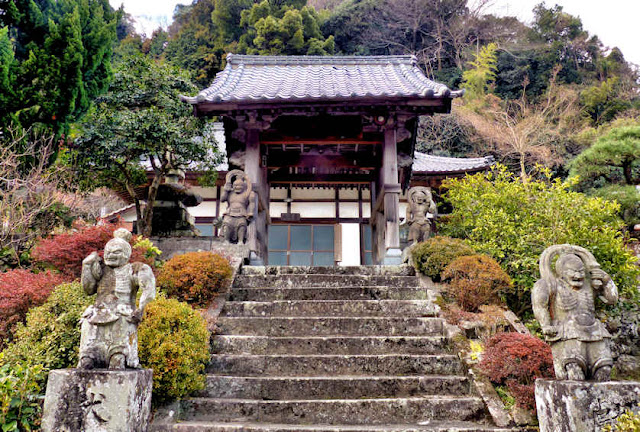Chishingura is one of the most famous stories of the samurai, known more commobly in English as The 47 Ronin.
Ako, on the Inland Sea near the border between what is now Hyogo and Okayama Prefectures was the home domain of samurai in the story, and therefore draws a lot of visitors.
Actually the events of the story mostly took place in Edo.
It is technically a flatland castle, though when built the seashore was closer than now and the castle was protected by the tidal flats but it was possible to access it by small boat.
A small fortification was here in the 15th century, but the castle was built after the area was awarded to the Ikeda Clan after the Battle of Sekigahara in 1600.
They built it as a secondary fortification to protect their border. Their main castle was Himeji.
In 1645 the domain was awarded to a branch of the Asano Clan, and Asano Naganao then spent 13 years greatly expanding the castle to its current configuration.
With 12 gates and 10 towers the castle was much grander than other castles of such small domains, although a keep, or tenshu, was never built even though a base was.
Ss the plan view in photo 2 suggests, elements of western castle design seem to have been incorporated.
Following the Ako Incident in 1701, the incident that led to the death of the Asano Lord and then later the revenge by his 47 samurai, the castle passed to the Mori Clan who hed it until domains were dissolved in the late 19th century.
Most of the buildings were dismantled, some walls too, and some moats filled in.
In 1921 a high school and its sports field was constructed in the hinmaru, inner bailey, of the former castle.
However, beginning in the 1930's some reconstructions began including the moats, and in 1955 the maingate was reconstructed.
In 1981 the high school was relocated and this has further expanded the reconstructions.
Two gardens have recently been fully restored to their former grandeur, and on these I will post next.
The castle is now quite large and open with lots of moats and walls.
To the north of the castle was the residences of the highest ranking retainers, including Oishi Kuranosuke, the leader of the 47 Ronin.
Now it is Oishi Shrine dedicated to the 47 and with statues of them lining the approach.
Nearby is the city History Museum with displays on the 47 as well as the local industry, salt. Very little info in English.














































































